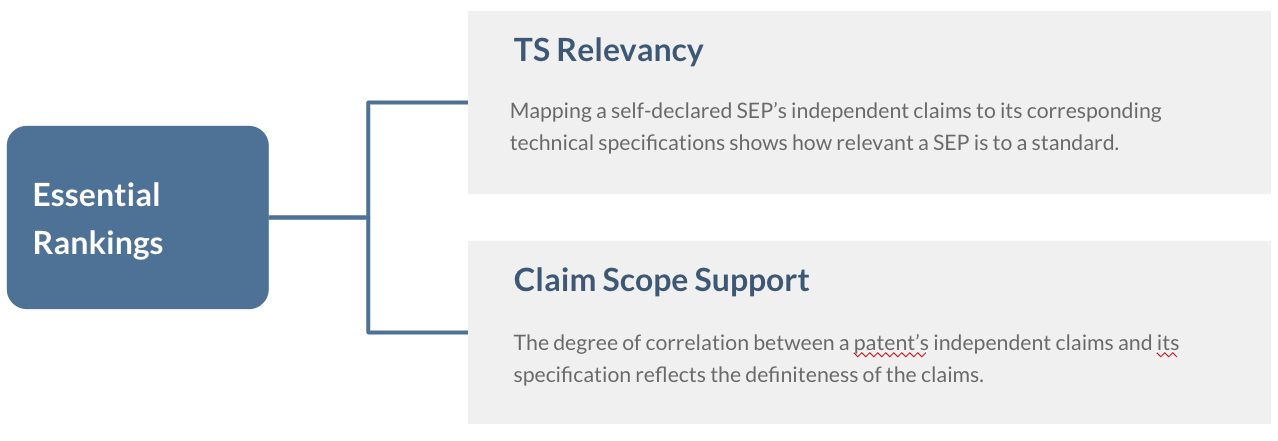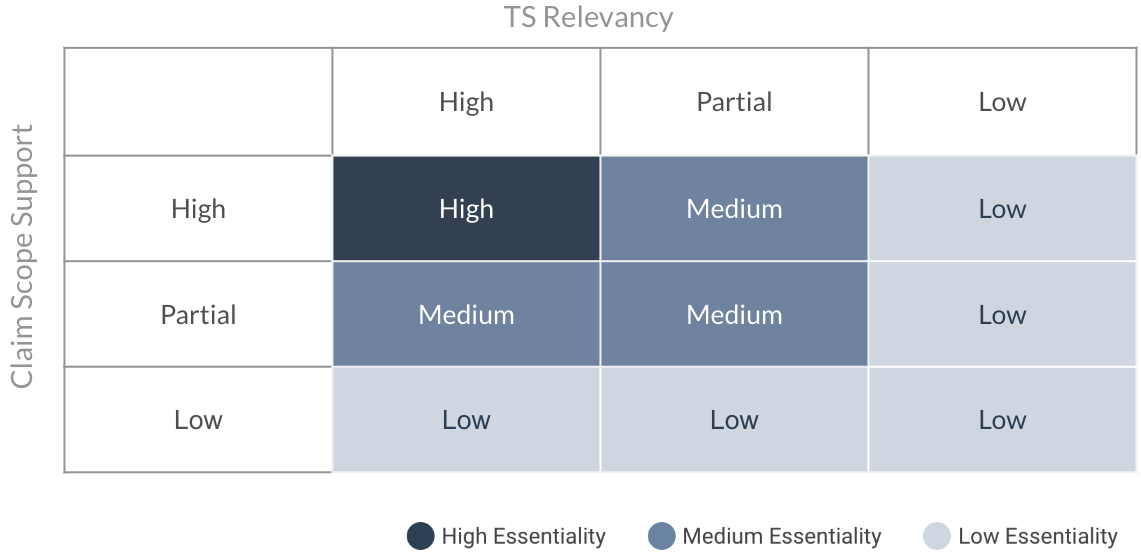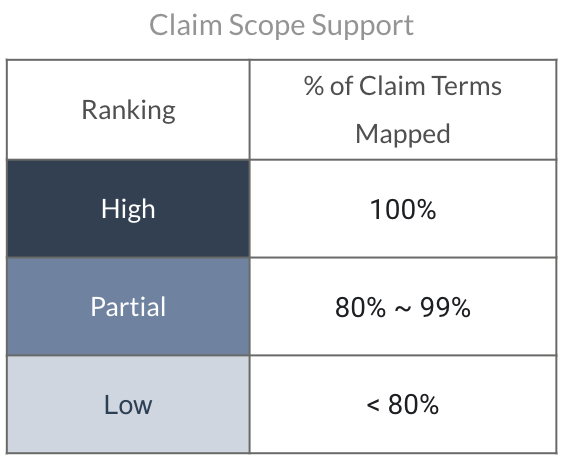Essentiality Rankings
What is SEP OmniLytics’ Essentiality Rankings?
To help alleviate the over declaration issue with standard essential patents, InQuartik’s Team has come up with Essentiality Rankings to conduct preliminary discernment of SEP essentiality.

SEP OmniLytics' Essentiality Rankings is a validation indicator based on the results of claim chart mapping. The rankings are given according to the degree of relevancy found by mapping a declared SEP’s independent claims to its specification or the 3GPP TS in its declaration.
In other words, the calculation is based on each independent claim. The highest-ranking result is selected to represent the Essentiality Ranking of a declared SEP.
SEP OmniLytics' Essentiality Rankings reflects how evident a declared SEP’s essentiality is through literal mapping (seen in SEP OmniLytics’ claim charts).
A higher ranking indicates that a claim chart can be created through literal mapping. On the other hand, a lower ranking suggests that the SEP-at-issue may need more testification from experts or further citations and references.
A few notes on SEP OmniLytics’ statistics and scope:
- SEP OmniLytics' statistics are based on the ETSI SEP Declarations; therefore, the scope of calculation is based on declared SEPs.
- Mapping of the claims is limited to the TS in a SEP’s declaration, using only the latest claim. I.e., we only select one public patent or one publication for mapping.
- SEP OmniLytics’ data scope for Essentiality Rankings only includes English patents from US, EP, and WO.
How do Essentiality Rankings work?
SEP OmniLytics’ Essentiality Rankings are derived from the combination of two indicators
— TS Relevancy and Claim Scope Support.

How is Claim Chart Mapping Done?
What is mapped?
TS Relevancy — a SEP’s independent claims vs. a declared TS
Claim Scope Support — a SEP’s independent claims vs. its patent specification

Mapped keywords include critical keywords and general keywords.
- Critical keywords indicate terms, abbreviations, and related terms that can be found and defined in 3GPP technical specifications.
- General keywords are other technical terms that can be found in patents.
-png.png)
For both the TS Relevancy and Claim Scope Support indicators, the mapping scope is the paragraphs in a subclause and not the entire subclause. This can ensure that the claim terms mapped are not evenly dispersed in each paragraph of a subclause but need to be found in a specific or adjacent paragraph to indicate relevancy.
How are SEPs ranked with Essentiality Rankings?
SEP OmniLytics' Essentiality Rankings include High, Medium, and Low rankings for the ETSI-declared SEPs in our database. A "High" ranking can only be derived from "High" rankings for both the TS Relevancy and Claim Scope Support indicators.

As the Essentiality Rankings are derived from the TS Relevancy and Claim Scope Support indicators, here is how the two indicators are calculated and ranked.
TS Relevancy

An independent claim ranks “High” for TS Relevancy indicates that over 90% of its claim terms can be found in its corresponding TS through claim chart mapping. As for a “Partial” ranking, only two-thirds to 90% of the claim terms can be successfully mapped.
Claim Scope Support

An independent claim ranks “High” for Claim Scope Support indicates that 100% of its claim terms can be found in its specification through claim chart mapping.
Viewing the Essentiality Indicators and Automated Claim Charts
1. Find the list of patents by clicking on the corresponding bar or group in the Essentiality Analysis Chart.


2. Click on any of the the indicator rankings on the patent list to view the Claim Chart Summary page for a specific SEP.

3. The Claim Chart Summary page shows how each independent claim in this patent is ranked. Use the dropdown menu to select a corresponding document/Technical Specifications for claim chart mapping.
4. Click on any of the rankings (High, Partial, Low) to view the Automated Claim Charts.
The High, Partial, and Low rankings seen on this page are determined using the same criteria mentioned on page 20, except that the scope is of each claim element. The ranking for an entire independent claim is determined by taking the minimum value of the claim element, which highlights the elements where any vulnerabilities may be found in a SEP.
-png.png)